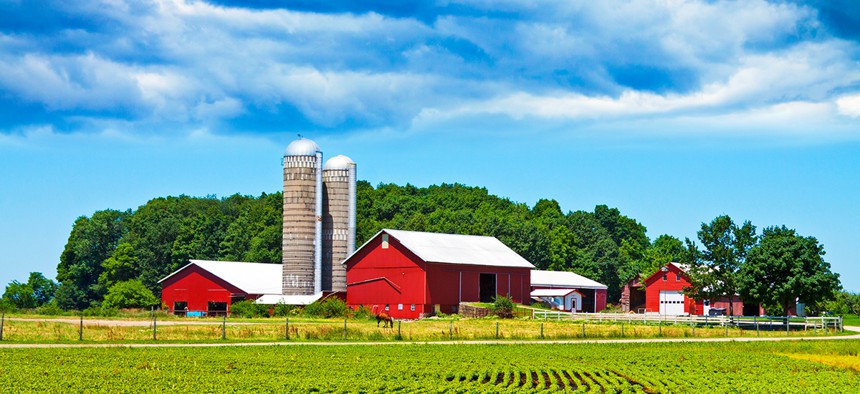Q&A: The Nanotech Future of the American Farm

MaxyM/Shutterstock.com
USDA's nanotech team thinks small sensors could help farmers grow more with less.
Your fruits and vegetables might soon contain nanosensors that can tell farmers if they’re safe from pathogens -- at least, that’s what program leaders at the Agriculture Department hope.
USDA funds nanotechnology research at various universities, aiming to eventually transition those products to American farmers. Nextgov chatted with Sonny Ramaswamy, director of USDA’s National Institute of Food and Agriculture, and national program leader for nantotechnology, Hongda Chen.
This conversation has been edited for length and clarity.
NG: Why is nanotechnology so important in agriculture?
SR: It can be everything for understanding and promoting improvements in the productivity of plants and animals. Getting more yields with a lot less land, a lot less water, a lot less use of pesticides. Improving photosynthesis and understanding at the nano and atomic levels what’s going on, so you can tweak those things and improve.
Conditions being where they are right now, if you want to feed the world in just a few more years with the projected population . . . we’re going to have to enhance productivity.
A number of the new pesticidal compounds are being made in the form of nanostructured particles. Instead of wholesale spraying lots of stuff, you can reduce that to very minute quantities.
Imagine a day in the future when you can plug in the wire from your home into a tree and grab the electricity produced by that tree to power your home. We’ve given money to folks at Vanderbilt University that have basically unraveled the electron transport system in spinach leaves and can light a lightbulb right now.
NG: What about nanosensors?
SR: We have sensors out the wazoo today, and they’re all emitting things. They’re detecting the amount of moisture, nitrogen, phosphorus, temperatures, humidity.
We’ve also provided funding to scientists to be sentinels. At Colorado State University, there’s a project … where plants, when they’re attacked by a pathogen, their leaf surface changes color based on nanoparticulate sensors. You can have a drone that comes in and drops a little pesticide right there, or maybe it zaps that with a laser. It can take out that plant at that very focal, localized infection.
Imagine if you’ve got a dairy farm, a lot of the water is basically wasted ... There’s an incredible amount of activity going on in improving the delivery of water and timing it with sensors to grab whatever water is not being used by plants and animals and recycle and reuse it.
HC: We supported a researcher to look at the early diagnosis of animal disease . . . to look at the sensors to detect avian influenza. At the country level, when they get an early warning, they will be able to grab the bird and swab the saliva and do lab testing. That information can be uplinked to the Internet, so you can heave an early warning and send it along the path of migratory birds.
NG: How can nanotechnology change nutrition?
SR: You want to functionalize food, so that now the nutrients that are in the food are now readily available to you and you’re able to absorb them and digest them and assimilate them much better. Companies like General Mills and Kellogg are deeply interested in functionalizing.
NG: How quickly does the emerging technology you fund make it to the field?
SR: In the robotics area, we gave money to Carnegie Mellon University, Purdue University, Washington State University and Oregon University to help robots pick fruit -- anything from an apple, a large hard fruit, down to a soft blueberry.
They’ve got machine vision and tactile sensors and things like that. The funding we provided was only in 2010 ... and now, it’s being sold and it’s on the market. It’s been translated into commercial outfit, so there are a number of examples. In the nano space as well ... a number of companies have stepped up and they’re picking up the pace.
NG: What challenges do farmers face when they’re trying to adopt these new systems?
SR: We have a very significant need to be thinking of potential unintended effects of nanoparticles -- what else might they be doing? We need to be very concerned about them and the regulations that go with them are a significant challenge as well. We’re still trying to figure out what the regulations are going to be.





